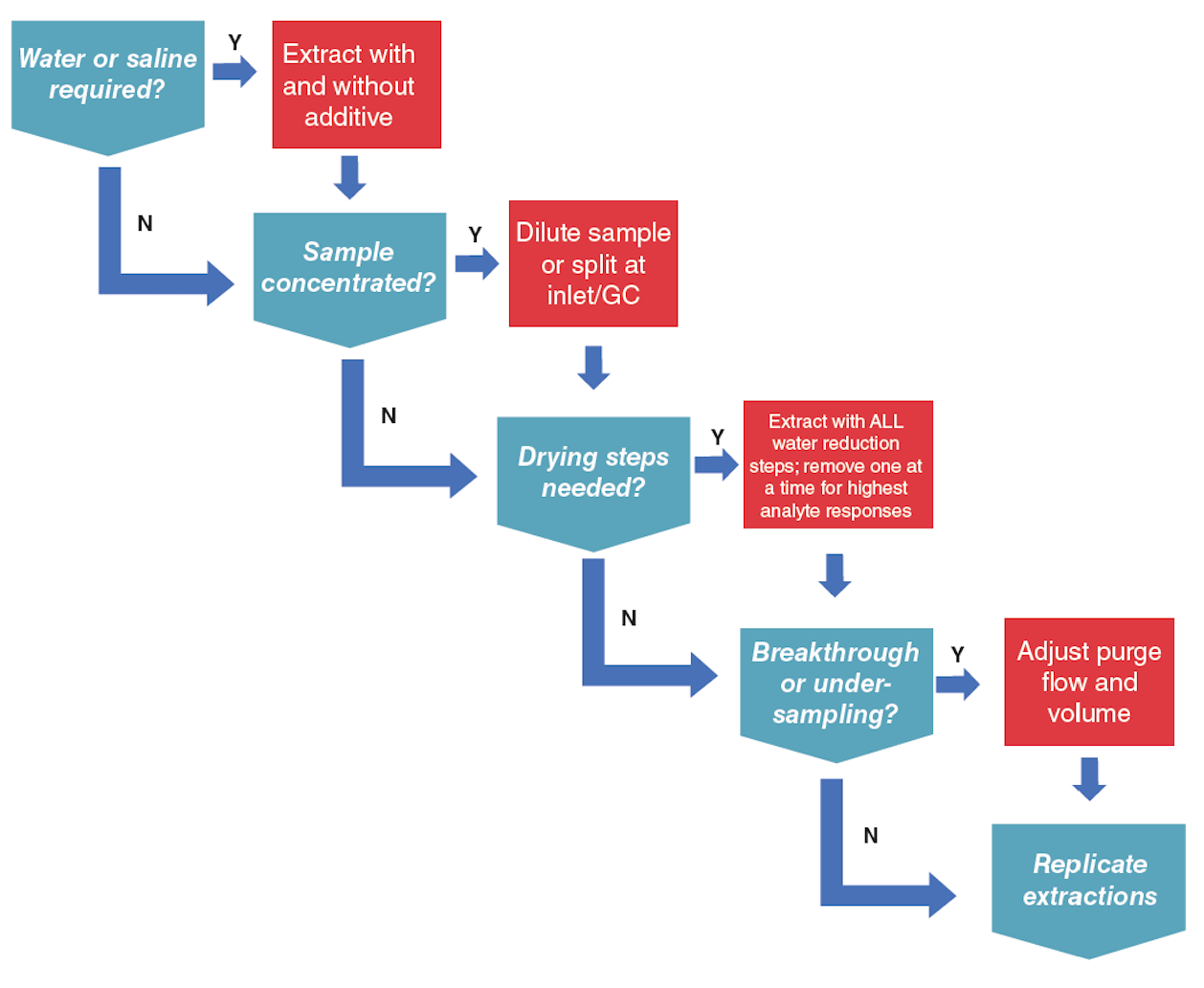New Sample Preparation Products and Accessories 2021–2022
Our annual report on new products introduced in the preceding year (since March 2021) covers sample preparation instrumentation, supplies, and accessories.
As the world emerges from the pandemic, assessing new products remains challenging. Although print and electronic materials abound, professional meetings and exhibitions have been hit or miss, and have been a combination of virtual, hybrid (a mix of virtual and in person), and, on the rare occasion, in person. Personal visits with sales representatives came to a near grinding halt. Similar to the 2021 new product review and presumably because of the pandemic, the number of new sample preparation technologies introduced in the past year appear to be down compared with previous years, though it is hard to assess without the personal visits to Pittcon vendors.
Our annual review of sample preparation products covers the previous year. In late 2021, the LCGC staff submitted a survey to vendors of sample preparation products. The responses to this survey are compiled in this review. In total, there were fewer responses than in previous years and less new product introductions during the past 12 months. Most product introductions were aimed at improved performance of existing technologies, especially solid-phase extraction (SPE), including sorbents and accessories.
This review is presented in three sections. First, SPE sorbents and products are discussed. Next, other sorbent-based sample preparation technologies are presented. Finally, attention is turned to other sample preparation accessories and supporting technologies. To assist the reader with some of the details behind these new products, each section presents a tabular summary of the associated products. In all cases, the new products we uncovered are presented in the annotated table, while the text highlights particularly worthwhile products.
Solid-Phase Extraction (SPE)
United Chemical Technologies, or UCT, led the way in developing new SPE products in 2021. The company introduced a new polymeric SPE in the 96-well plate format with Micro‑Prep. The Micro-Prep utilized disk technology with dense packing of the sorbent particles to generate the uniform flow needed for sample clean-up and analyte enrichment. Four different chemistries, reversed-phase hydrophilic-lipophilic balance (HLB), mixed-mode strong cation exchange, strong cation exchange, and strong anion exchange are available in a single package that includes the extraction plate, collection plate, and sealing film. Next, UCT brought to market a silver ion-functionalized silica gel cartridge, the Enviro-Clean Fusion Ag+. The sorbent, packed as 500 mg or 1 g in 6-mL cartridges or 2 g in a 15-mL cartridge, is not deactivated by water and is used for the fractionation of aliphatic and aromatic hydrocarbons because the aromatics form a charge‑transfer complex with silver ions. To address environmental friendliness even further, acetone can be used in place of dichloromethane as the elution solvent. The final product entry by UCT was the HydraFlow vacuum-controlled SPE workstation. The four independent channels can extract samples independently or simultaneously in an environment free of cross-contamination. The sample pathways are coated to minimize corrosion from exposure to organic solvents or acids. Channel switching accommodates the collection of the sample eluate and separation of aqueous and organic wastes.
Two cartridge products from Restek focused on sample clean-up. The Resprep CarboPrep Plus SPE cartridge is a carbon-loaded device specifically designed for the clean-up of water and soil samples for the analysis of organochlorine pesticides. Meanwhile, in both cartridge and plate formats, the Resprep PLR SPE is intended for phospholipid and protein removal from plasma, serum, and whole blood prior to chromatographic analysis, avoiding signal suppression in subsequent mass spectral characterization. A top frit captures proteins, and a sorbent bed of a porous polymer sintered with silica particles retains phospholipids. Another product aimed at protein or peptide desalting and fractionation is the Empore C18 Stage tips from CDS Analytical. The pipette tips feature chemically resistant C18-treated silica gel placed into micropipette tips. The chemical resistance allows use of organic solvents and acidic or basic conditions for protein and peptide desalting and fractionation.
Speciality SPE phases are featured in two new SPE devices. The CDS Empore 6080 HLB Standard 96-well plate features a proprietary prefilter followed by a mixed-mode hydrophilic‑hydrophobic balance styrene-divinylbenzene material for extraction of serum, plasma, and whole blood. The pyrrolidone and urea HLB sorbent bed is claimed to allow high product consistency. Hilicon AB introduced the iSPE HILIC, featuring hydroxyethylamide, sulfate, and quaternary ammonium silica in both cartridge and 96-well plate formats with high retention capacity for sample preparation of hydrophilic compounds. Suggested applications include the purification of glycopeptides, glycans, hydrophilic peptides and metabolites, and related biomolecules.
Table 1 provides a summary of each of these SPE products.
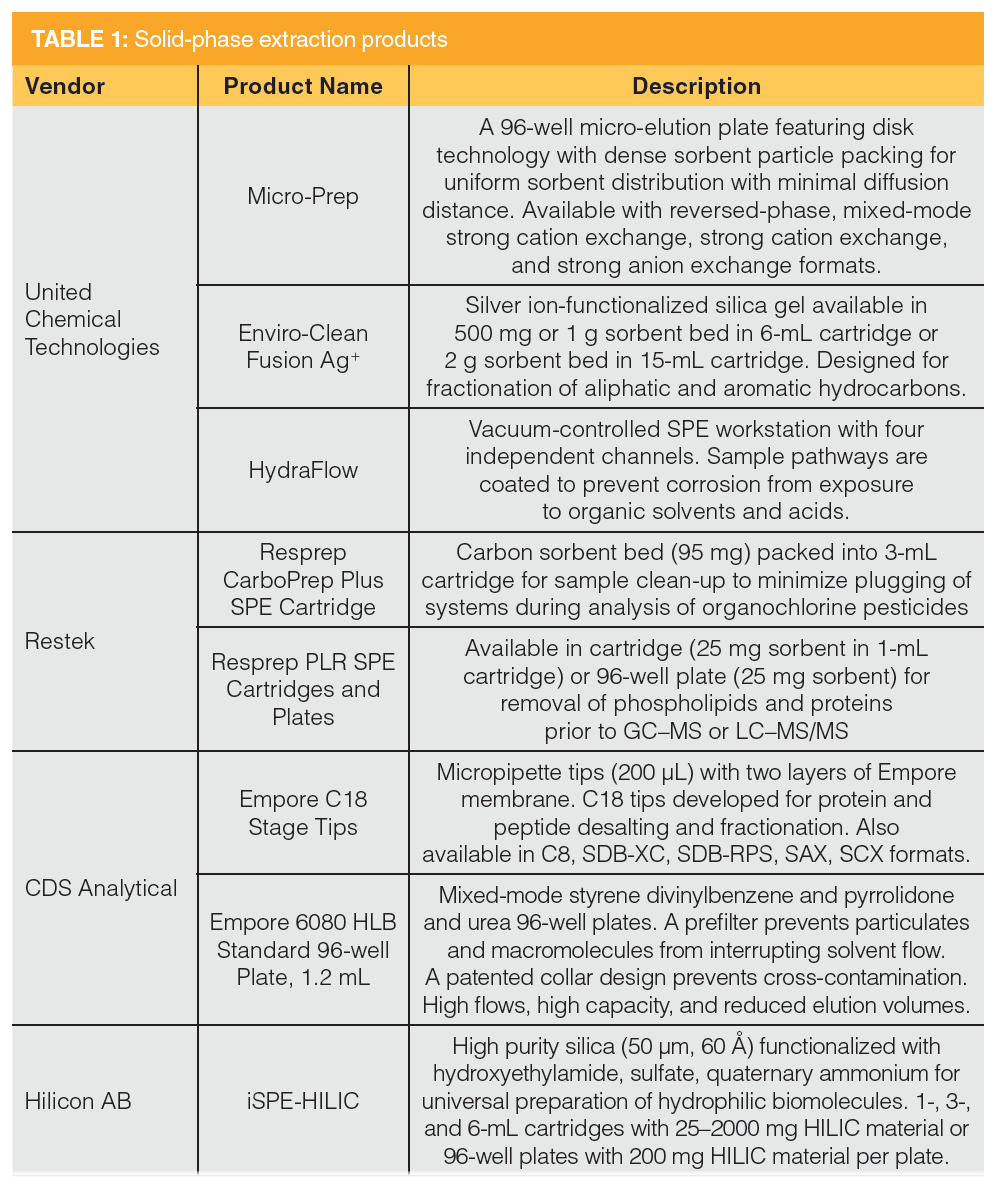
Sorbent-Based Technologies
Building off the decades of experience with SPE, these and similar sorbents are reapplied in several other sample preparation modalities. This review period featured four of these. Phenomenex claims an all-in- one sample storage, transfer, and filtration process with Verex filter vials. The polypropylene 12 × 32 mm vials incorporate a syringe, filtration membrane, vial, cap, and septa into a single product, as depicted in Figure 1. Liquid sample is placed into the reservoir of the external vial, then the internal plunger is compressed to push the sample through the membrane, which traps particulates to produce a particulate‑free sample. Equipped with a pre-slit PTFE/silicone septa, the vial can be placed into most chromatography autosamplers. A variety of filtration media are available for a range of environmental, food, and bioanalysis applications. The sole hydrophobic membrane, polytetrafluoroethylene (PTFE), is suitable for filtration of organic, highly acidic, or basic solvents. Four hydrophilic membrane options exist including regenerated cellulose for aqueous and organic solutions, nylon for bases, solvents, alcohols, and aromatic hydrocarbons, polyethersulfone for critical biological samples, tissue culture media, additives, and buffers, and polyvinylidene fluoride for alcohols or biomolecules.
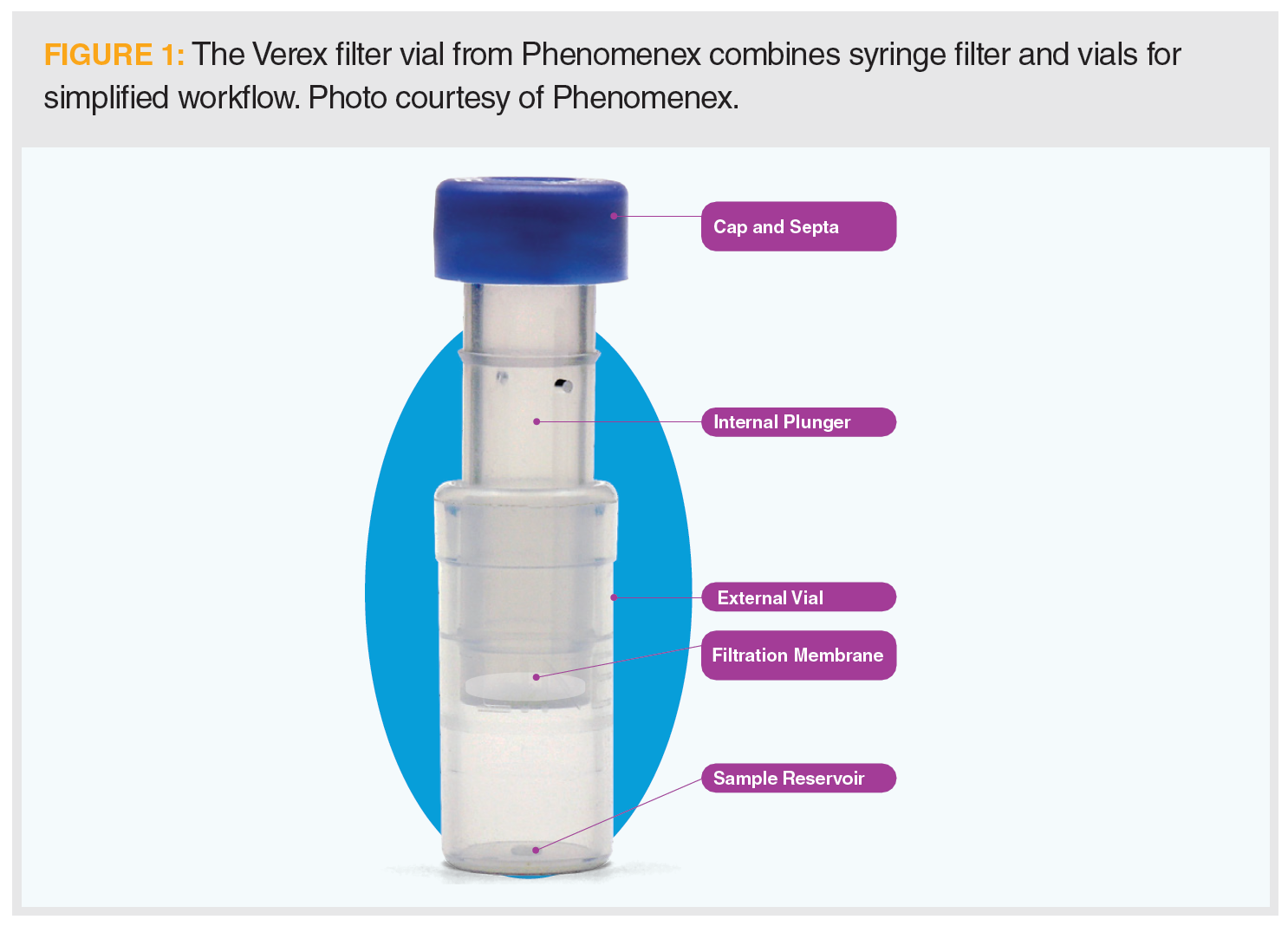
QuEChERS (quick, easy, cheap, effective, rugged, and safe) and simplified liquid extraction (SLE) are two sorbent-based extraction technologies that are developing a following in the field. In response, new product offerings addressed these techniques. Thermo Scientific refined their QuEChERS collection to include pre-weighed high-quality salts and sorbents designed to minimize clumping of salts to provide reliable and reproducible results. Available in pouches and pre-filled tubes, the product collection accommodates the original QuEChERS methods, as well as the Association of Official Analytical Chemists and European methods. Phenomenex developed a cleaner version of their synthetic SLE sorbent for the Novum Pro SLE to achieve lower detection levels for clinical assays.
Markes International introduced the HiSorb sorptive extraction system for the analysis of volatile and semivolatile organic compounds in liquids and solids by thermal desorption-gas chromatography–mass spectrometry (GC–MS). High capacity immersive or headspace sampling accommodates trace analysis with the use of four available sorbents: polydimethylsiloxane (PDMS) for volatiles and nonpolar semivolatiles; PDMS/carbon wide‑range (CWR) for low-molecular-weight compounds; PDMS/divinylbenzene (DVB) for volatiles, amines, and polar compounds; and DVB/CWR/PDMS for volatiles, semivolatiles, and flavour compounds. Inert-coated probes are available for reactive systems. When used with Markes’ thermal desorption system, trapping is achieved with electrical cooling rather than cryogens.
Table 2 provides a summary of these sorbent-based technologies.
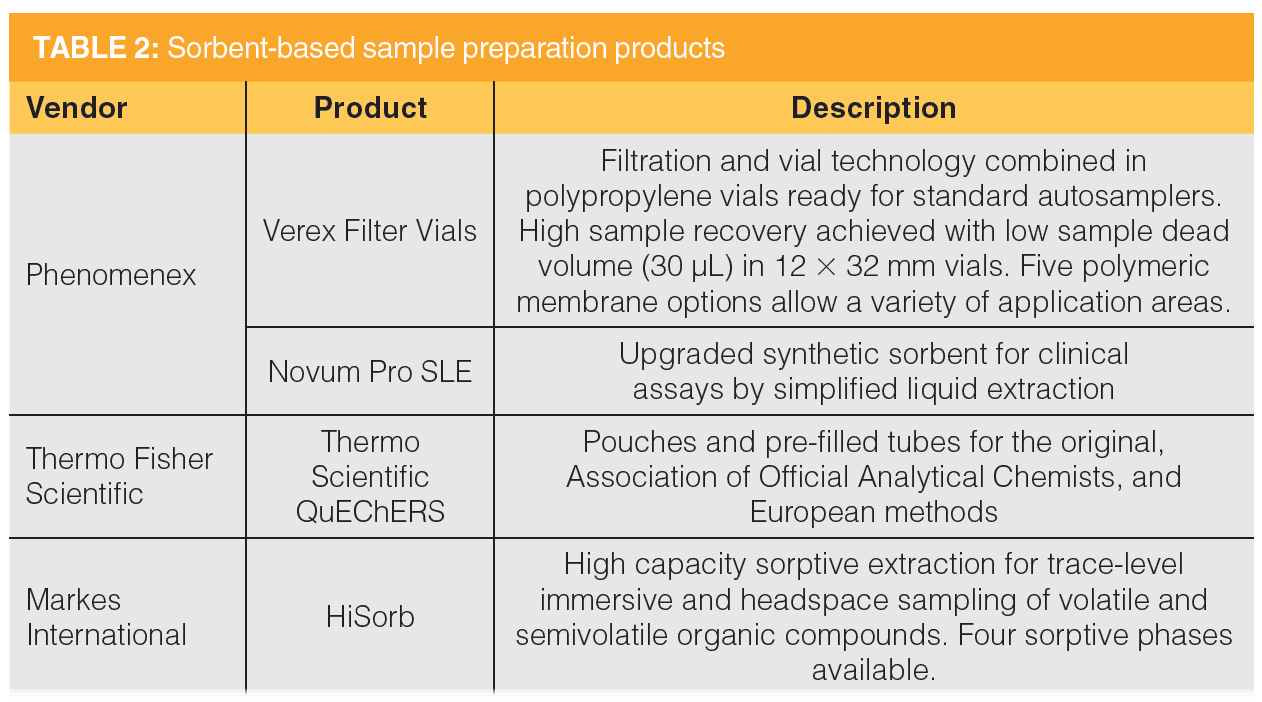
Sample Preparation Accessories and Related Products
The field of sample preparation is so broad, and there are a large number of established and emerging technologies identified as sample preparation, that commercial developments and new product introductions are often in seemingly scattered areas. An attempt is made here to unify these varied product offerings.
Gas Sampling:Markes International created a compact radial diffusive sampler, the Pocket Diffusive (POD) Sampler, compatible with thermal desorption. The sampler has a large diffusive surface area for adsorption and a short diffusive pathway. After the POD Sampler is deployed, the cover is removed for sampling. After the suitable sampling period the cover is replaced. Volatile compounds as low as C4 are sampled. Two valve systems were introduced for gas sampling. ASDevices presented the S4 Sample Stream Selection System. Two, four, six, and eight inlet versions are available, with a proprietary purge leap sealing valve to preserve sample integrity by eliminating contamination by ambient air. The Restek Air Valve Excellence (Rave+) air diaphragm valve possesses durable, roller‑hardened valve port threads and an all-metal seat for long service life. These valves are standard in the Restek line of air sampling canisters.
Solvent Evaporation: Two evaporation systems came to the market this year. The Porvair Sciences Ultravap Mistral XT150 is a blow down solvent evaporator capable of drying at temperatures up to 80 °C. Programmable evaporation methods are allowed and 15-cm vials and ANSI standard microplates are accommodated. Biotage presented the TurboVap Dual automated single- and dual-channel well-plate evaporation system. Preheated gas and convection heating speeds the evaporation process and improves consistency. Energy and gas consumption are monitored.
Homogenization/Milling: PreOmics GmbH introduced the BeatBox sample homogenizer for rapid (less than 10 min) and scalable treatment of tissues and cells from 96-well plates. The Frontier Laboratories IQ Mill-2070 cryogenic mill is a benchtop grinding device that can handle up to three samples at a time. The impact and shear crushing mechanism comes from a high-speed figure eight motion.
Enrichment: YMC developed a N-Rich impurity amplification system for the isolation of product-related impurities for pharmaceutical active ingredients via a fully automated process.
Glassware: Thermo Scientific assisted analysts with the Sure Start collection of vials, caps, inserts, kits, mats, and well-plates. High-quality materials minimize analyte adsorption, pH shifting, and contamination.
Table 3 provides a summary of these sample preparation accessories and related products.

Conclusion and Future Directions
Although it seems as if new sample preparation product offerings have slowed since the pandemic, vendors must continue to innovate to address market needs. As the pandemic winds down and conferences and expositions become live events again, awareness of new product developments should rebound. As a result, breakthrough technologies should follow.
About the Column Editor
Douglas E. Raynie is Department Head and Associate Professor at South Dakota State University, USA. His research interests include green chemistry, alternative solvents, sample preparation, high-resolution chromatography, and bioprocessing in supercritical fluids. He earned his Ph.D. in 1990 at Brigham Young University under the direction of Milton L. Lee. Raynie is a member of LCGC’s editorial advisory board. Direct correspondence about this column via e-mail to amatheson@mjhlifesciences.com
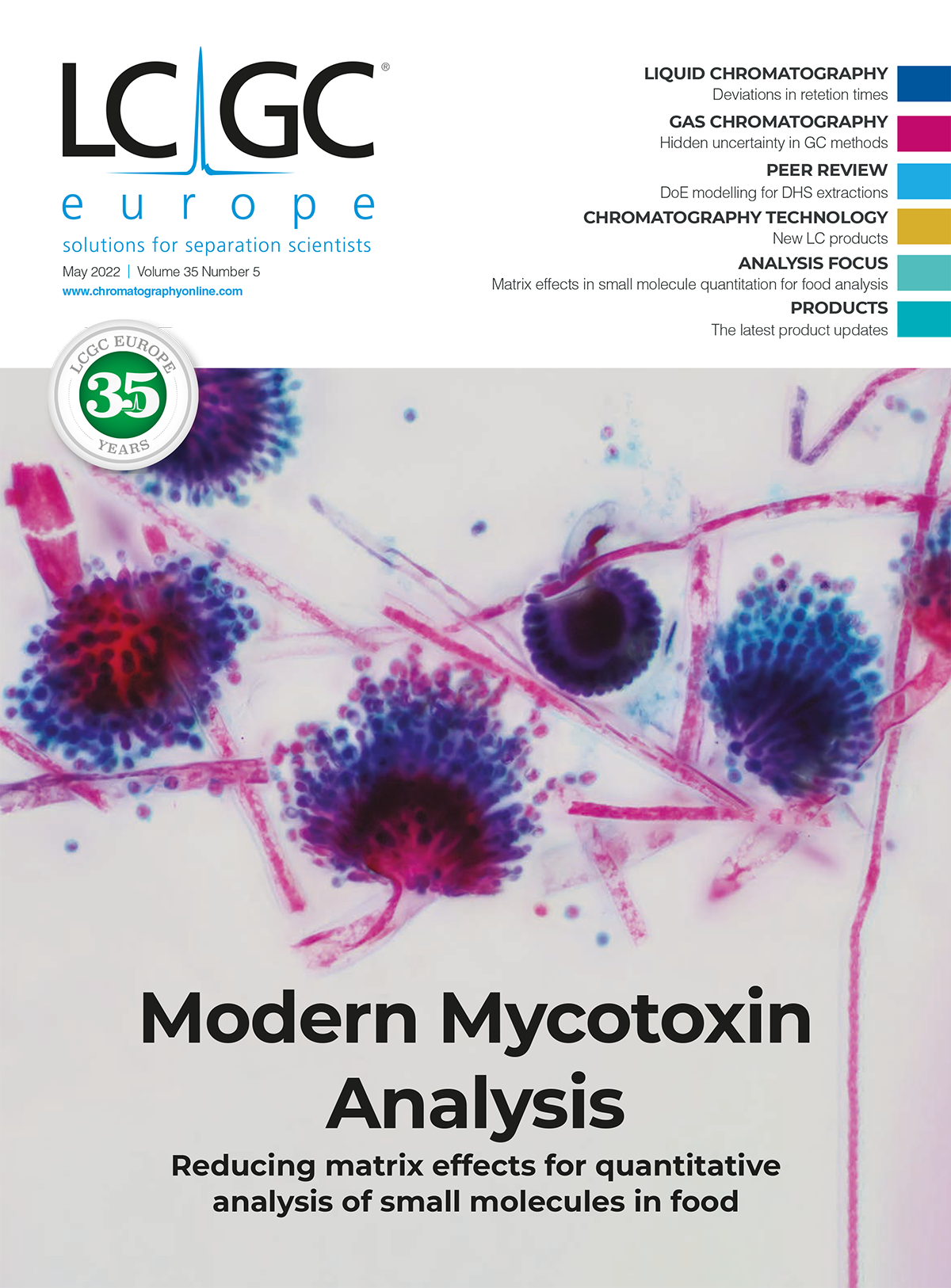
A Matrix-Matched Semiquantification Method for PFAS in AFFF-Contaminated Soil
Published: April 14th 2025 | Updated: April 14th 2025Catharina Capitain and Melanie Schüßler from the Faculty of Geosciences at the University of Tübingen, Tübingen, Germany describe a novel approach using matrix-matched semiquantification to investigate per- and polyfluoroalkyl substances (PFAS) in contaminated soil.
Silvia Radenkovic on Building Connections in the Scientific Community
April 11th 2025In the second part of our conversation with Silvia Radenkovic, she shares insights into her involvement in scientific organizations and offers advice for young scientists looking to engage more in scientific organizations.

